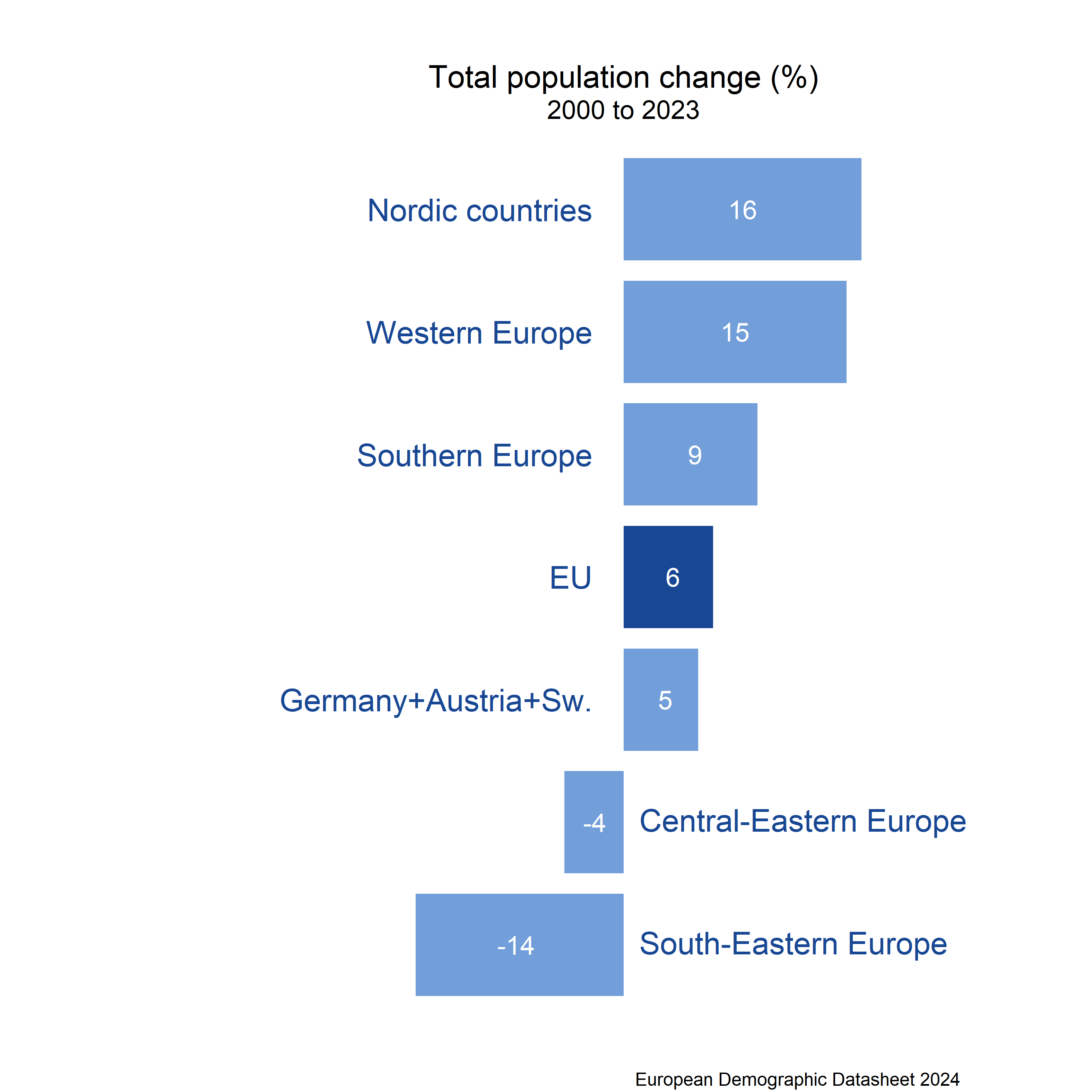Regional Barplots
+
Definitions of regions
takes into account geographical, historical and geopolitical divisions, as well as similarity in demographic trends. Countries are grouped into regions as follows:- Nordic countries (Denmark, Finland, Iceland, Norway, Sweden)
- Western Europe (Belgium, France, Ireland, Luxembourg, Netherlands, United Kingdom)
- Germany, Austria, Switzerland
- Southern Europe (Cyprus, Greece, Italy, Malta, Portugal, Spain)
- Central-Eastern Europe (Croatia, Czechia, Estonia, Hungary, Latvia, Lithuania, Poland, Slovakia, Slovenia)
- South-Eastern Europe (Albania, Bosnia and Herzegovina, Bulgaria, Kosovo, North Macedonia, Montenegro, Romania, Serbia)
- Eastern Europe (Belarus, Moldova, Russia, Ukraine)
- Caucasus (Armenia, Azerbaijan, Georgia)
Türkiye is not included in any region.
Indicators for regions are computed as population weighted averages.
European Union refers to the current territory of 27 member states.
The Datasheet does not cover European countries with population below 100 thousand (Andorra, Liechtenstein, Monaco, San Marino, and Vatican).
Data for Azerbaijan, Cyprus, Georgia, Moldova, and Ukraine exclude territories that are not under government control.
